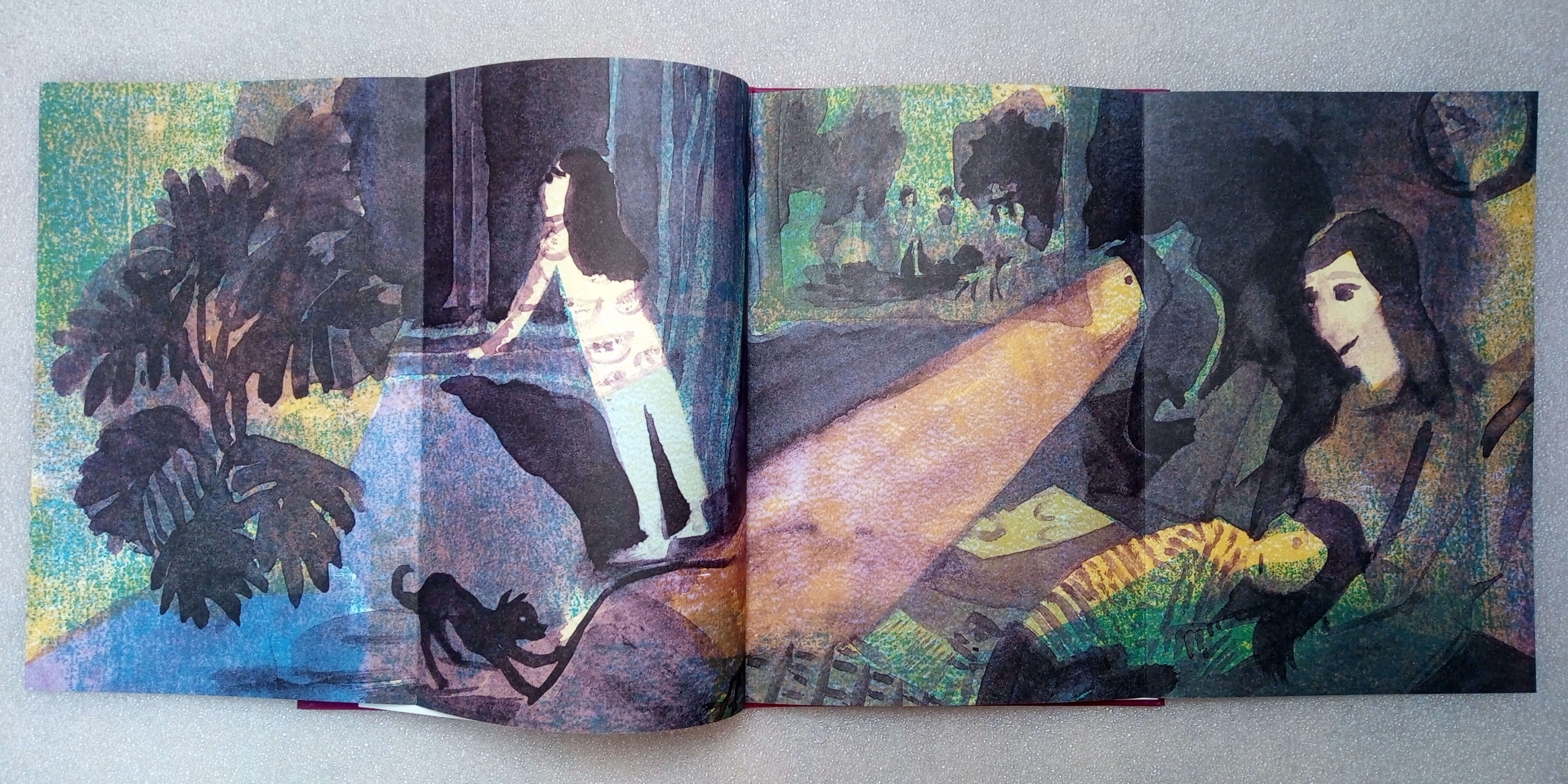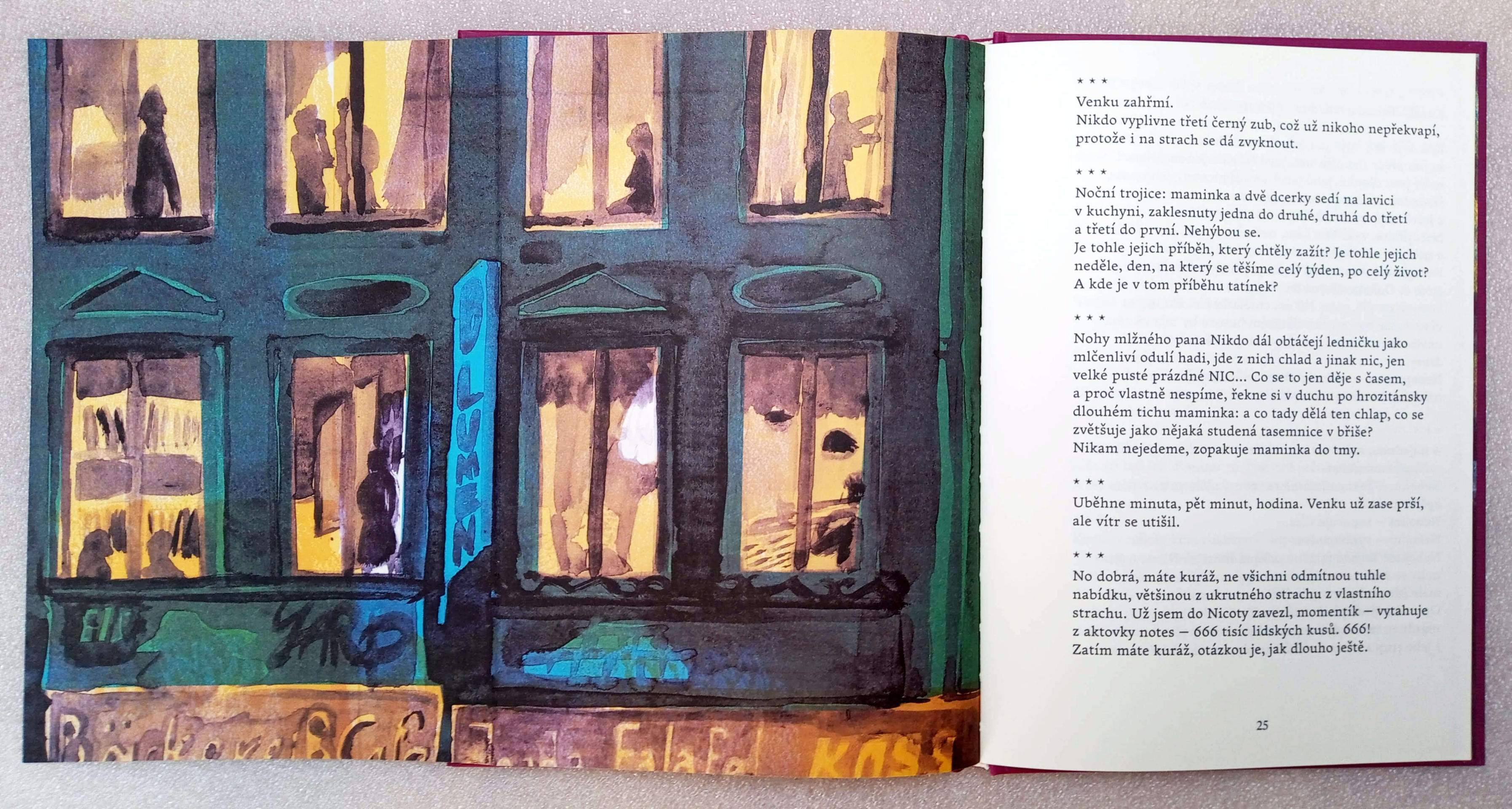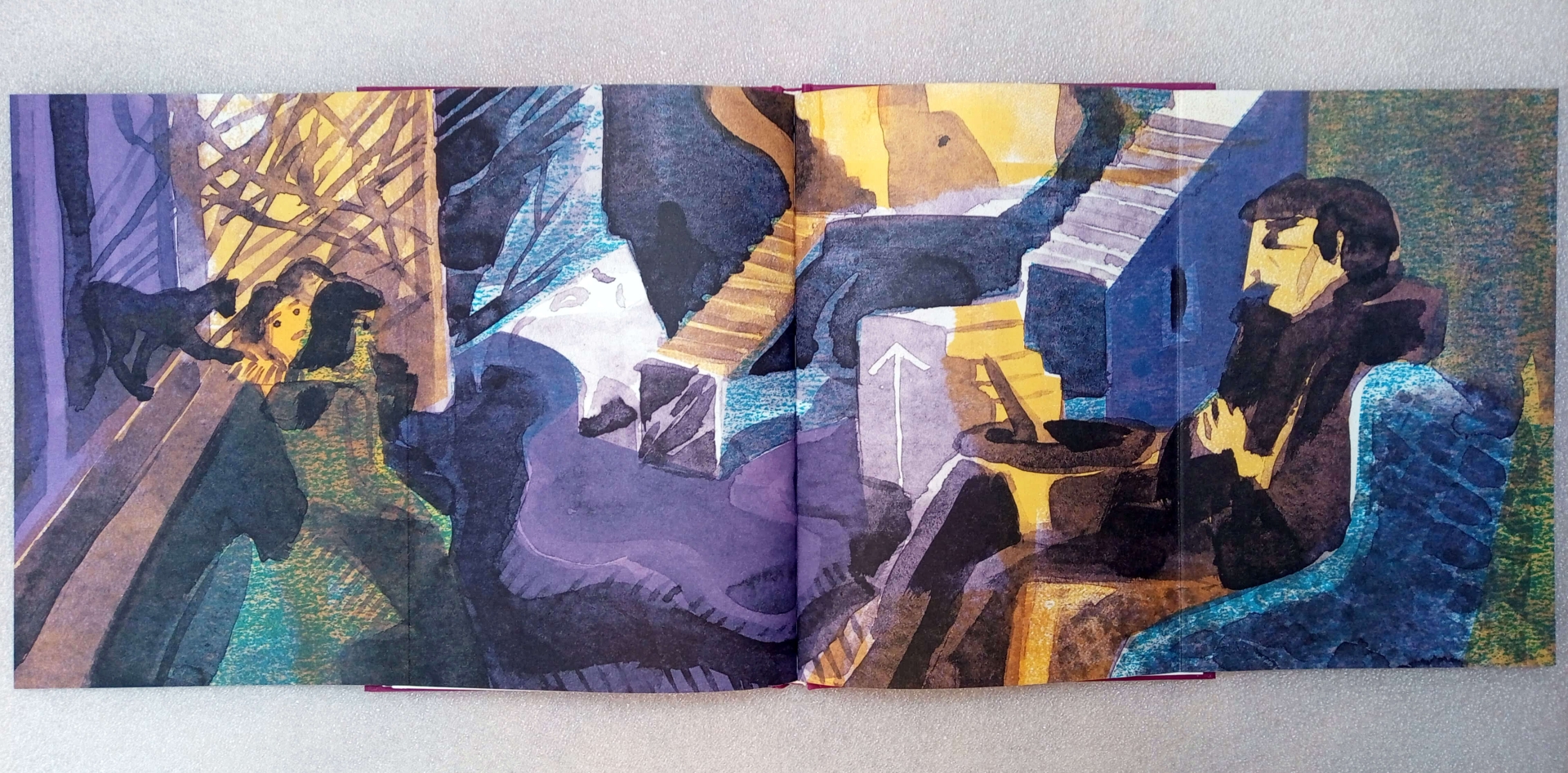2
Illustrator of the Year
Darja Čančíková Bogdanová



I feel like writing it, it’s there on my lips: Darja Čančíková is a crackerjack. OK then, I won’t fight it and I will write it: Darja Čančíková is a crackerjack. And I will add: Darja Čančíková is a different crackerjack every time. Take it as the title of this short laudation.
After a break of almost ten years, when Darja Čančíková (b. 1982) devoted her time to graphic art and painting (but probably mostly to her maternal duties, since she has six children), and which was preceded by a number of original author’s books and illustrations of books by other authors, Čančíková has returned to book illustrations in the past three years, which I think is great news for all illustrated books lovers who want to be surprised by the art accompaniment.
First, almost two years ago, she delighted us with her inventive compositions in Sophie de Mello Breyner Andresen's tiny book Dánský rytíř, and a few months after that in the equally small Svatba v Káně galilejské. Illustrations for Dora Kaprálová's Pan Nikdo a bílá tma, published this year, are Čančíková’s latest illustration project and come in much larger formats. I say illustrations, but they are really more like paintings that not only create the backdrop to the book's plot, but also function as stand-alone paintings that, thanks to the folded pages (it would be a shame to make the paintings smaller), literally tip into our world so that we can immerse ourselves in them for a while and remain surrounded by the fantastic play of dark colours and shadows and cold, yet inviting ambience.
In recent years, we've become accustomed to repeatedly seeing certain illustrators win various competitions, even though their work has become quite repetitive in terms of style. Čančíková is not one of those. She is not burdened by a single style. She is not easily recognizable. Because Darja Čančíková is a different crackerjack every time.
I wish I could see her work in the streets. It would make the streets more beautiful. Isn't that possible? But yes, it is possible, for example as theatre posters, which have remained enchanted in photography for years.
Jaroslav Tvrdoň
Andrea Běhounková
Andrea Březinová
Karel Císař
Iva Knobloch
Martina Králová
Ondřej Lipár
Kristýna Mazánková
Jan Mergl
Valentina Nízká
Anna Nosková
Jana Patočková
Alena Řezníčková
Filip Suchomel
Pavel Turek
Tereza Urban